Manga: The Hidden Treasure in America
When you walk into a Barnes & Noble, you expect to find mostly books, not really graphic novels or comics. If you look carefully, you’ll come across a section that catches your eye immediately. Here, you see shelves of small books with colorful spines that expand all the way to the end of the aisle. Above this great stretch you read out not ‘Comic Books’, but ‘Manga’. It’s a Japanese product; a type of comic that is unlike the ones that are made in America. For instance, a typical American comic is tall and thin in size, whereas manga is small and compact. Then if you were to pick up one of each and compare their covers and content, they are very different. While an American comic has a colorful cover and polychrome pages, manga catches one’s attention with the ploy of color, only to find the pages to be completely monochrome. Manga is a unique art form that has taken America’s young female readers by storm, even though it originally came from another country.
Though it has its origins dating back to caricatures found in Buddhist temples, the manga that we see these days was due to foreign influences, including America. After the unanimous surrender at the hands of Fat Man and Little Boy, the allies had a much stronger occupation in Japan than before, beginning with taking away the countries’ own military. However, out of this terrible event came a burst of artistic expression because of certain liberties given by the allies. There was also a great deal of American imports that were coming into Japan by this time, including Disney films and comic books like Superman. These comics inspired a number of manga artists, including a man named Osamu Tezuka, also known as the “Godfather of Manga”.
At a young age, his father exposed him to a number of imported French and German films. Then World War II happened when he was just a teenager, and it was after the atomic catastrophes that Osamu Tezuka decided to become a full-time cartoonist in order to promote peace. But instead of merely copying his American counterparts, he created something that was completely new at the time. For instance, his narratives appealed to people of all ages and genders because of their Disney-like appearance with strong themes about humanity that were clearly influenced by the bombs. Plus, his panel layouts are similar to that of cinema.
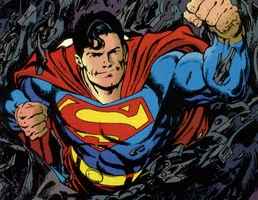
This change alone became one of the major differences between manga and American comics. Unlike the stagnant, simple arrangement of square-shaped panels you see in Superman comics where the hero is confined inside his own space and posed in a picture-like moment (see Fig. 1), Tezuka used the same techniques in the films he saw and put them down on paper. What this new style creates is an endless flow of various angles, close-ups, perspectives, and so on (see Fig. 2). You also notice an obvious contrast in the art if you looked at them side by side. While most comics tend to feature superheroes with perfect bodies drawn to anatomic perfection, manga is simpler, and yet dynamic in its portrayal of extreme emotions on the character’s faces and actions.
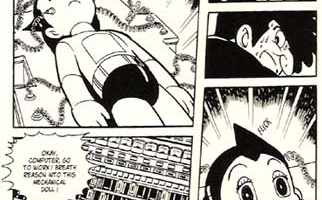
It is from these pictures (see Figs. 1 and 2) that we see a distinct preference between manga and American comics based on gender. The main reader group of American comics, for example, is typically male because most superheroes tend to be square-jawed and extremely muscular men. Of course, there are exceptional female comic book readers as well, but not very many due to the tight circle the comics market has created around itself by focusing on the current readers only. Meanwhile, the main readership of manga is female. The main reason for this preference is that manga includes more genres, which range from comedy to educational, whereas American comics tend to focus more on superhero stories. Also, there is the format to consider. Because boys don’t read as many books as girls do, the book-like format of the manga isn’t very appealing, whereas it’s the opposite for girls.
But unlike teen novels, which are written for all young adults, manga in Japan is strictly divided between Shōnen (Boys) and Shōjo (Girls). Each type has their own array of genres, but the stories have distinctive elements that appeal to the gender it’s written for. For example, Shōnen manga likes to stress the values of friendship and competitive struggle, which refers to sports; a typical pastime for boys. Such examples include Naruto, Hikaru no Go, and Bakuman. On the other hand, Shōjo manga likes to focus on teenage romance narratives that feature a protagonist who has some kind of limitation to confront in their interactions with friends and love-interests. Nana, Kitchen Princess, and Sailor Moon are just a sample of the titles in this genre. The reason for this goes back to Japan’s views on gender.
In a Confucian society, the men are placed above the women. Of course, as democracy wove its way into Japan after World War II, women were given more liberties, but in manga, they are still regarded as submissive, sexual objects. For this reason, the majority of males who read manga are typically interested in stories where the hero finds himself surrounded by gorgeous women, also known as Harem manga, or gritty action-packed tales with a beautiful woman as the goal. However, this demographic is very small compared to the number of female manga readers, who are typically interested in a wider range of stories compared to the limited ones the boys read.
Now ironically, one of the big demographics in the audience of Shōnen manga is female readers, even though the manga is specifically targeting males. This phenomenon is due to the narrative progression of manga in general, which applies to both Shōjo and Shōnen manga. While American comics tend to have heroes that deal with external problems, manga’s heroes and heroines not only have to overcome physical obstacles but they also change internally. Girls can relate to characters who change, because they themselves are going through changes, whereas boys are more interested in fulfilling their inner “manly” urges, namely violence and sex, by reading stories with that kind of content in it, which is more present in comic books than manga. Also, you typically find more girls in Shōnen who make up for their sexy appearances by having strong personalities and they are usually equal to the men. On the other hand, the heroines in Shōjo are usually weak and dependent, which doesn’t suit the mind of a modern female reader due to its sexist implications.
Another popular manga among girls is Yaoi (Boy Love) manga, which basically involves a romance between two boys who are both trying to accept their love for each other, often resulting in sex. While this may seem like cheap porn to some, Yaoi is actually an exploration into the different kinds of love that are possible, which the Japanese are more open to than Westerners. For instance, the love that the two men share in these manga is similar to a heterosexual relationship, because often one of the pair is considered more ‘masculine’, while the other acts very ‘feminine’ as he tries to understand his sexual nature. So in its own way, Yaoi breaks the social norm about sexual behavior.
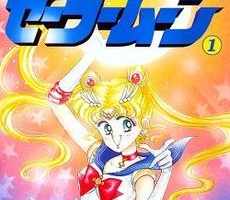
Of course, this doesn’t apply to just Yaoi. Manga in general goes against the Western traditions when it comes to sex and violence, which may help explain why some people don’t read manga despite its sub-cultural popularity. Take Sailor Moon for example (see fig. 3), a story about an average girl named Usagi who transforms into Sailor Moon, the Soldier of Love and Justice, when the forces of evil threaten humanity. Read by young girls all over the world, Sailor Moon breaks the gender stereotypes by having a female play the role of the hero. It also includes brief nudity, androgynous male antagonists, a cross-dresser, and two potential homosexual couples on both the enemies’ side and the heroines’ side.
In Western media, we would never see the kinds of things that are in Sailor Moon, or any other manga for that matter. If that is the case, then why is manga widely accepted in America? The answer lies in “Soft Power”. “Soft Power” is an economic term used to describe Japan’s approach to the global market. Instead of being upfront about its nation like America’s McDonalds™ enterprise, Japan’s exports are authentically Japanese, but it integrates other cultures into it, and that’s what makes their exports effective, including manga. The characters are supposed to be Japanese, but judging from their physical features, some of them don’t even look Japanese. Prior to the arrival of Westerners, Japanese artists depicted themselves with Asian features, then afterward, a sudden shift occurred which resulted in the creation of Japanese characters with ideal Western features, like Sailor Moon (see fig. 3).
This way, Japan can compete with America on equal ground, while subtlety expressing its bitter hatred through cleverly disguised media that contains strong character development and breaks the stereotypes of romance. For these reasons, manga has created a strong readership behind it. However, this cultural phenomenon would not have been possible without American influence and Japan’s “Soft Power” as the country opened up to the world during the 1970s and 80s. But instead of openly confronting American culture, Japan wants to embrace all cultures, absorbing their ideals and story archetypes, all while staying true to its own traditions.
What do you think? Leave a comment.
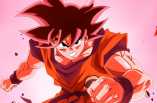

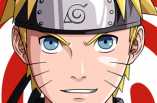
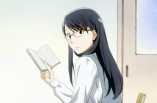
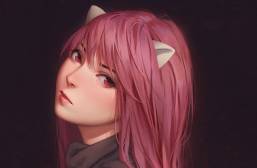
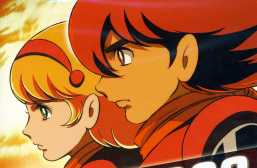

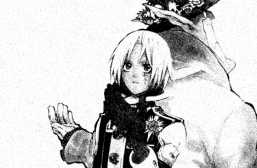
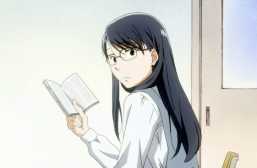
Thought Anime/Manga was silly. Then I stumbled upon a thing called Death Note that my boys were watching. For the umpteenth time in my life I was proven wrong. Gripping, fascinating and even humbling. I am not suddenly a rabid fan but it opened my eyes. Also introduced me to the surprising world of Korean/Japanese music. Sure some of it is bubble-gum, and so it is in the West, but some of it is extraordinary.
I literally worshipped Death Note when I first read it, that’s until I read ‘Liar Game’ which IMO if you think DN puts you on the edge of the seat, LG will def topple you over.
They were gonna do DN as a Hollywood film but it got discreetly shelved away when fans found out that Zac Efron’s going to be Raito; I know this cos I was one of the lynching mob 😀 Thinking about it now, maybe he’s not so bad after all.
Another anime that I’d like to see Hollywoodised is ‘Cowboy Bebop’; darling Keanu Reeves was also super enthusiastic about it but again it got shelved…
I sense a conspiracy against all good animes :<
Incidentally Monster (best anime ever) may be about to be made into a TV series by HBO and Guillermo Del Toro (they’re in negotiations) and according to Del Toro it will be a faithful adaptation of the book and Urasawa has agreed to it only if he can review each episode.
That could prove quite interesting.
That could be interesting, Monster is my favourite manga/anime series. I adore Naoki Urasawa’s work.
The Japanese Anime created much more interesting and diverse an creative energy stories using art. Even as a kid these were fascinating as well as amazing attention to detail for animation as you’d find echoing the complexity in the natural world and in reality. Disney seems by comparison either 1) Teddy Bear’s piccnic or 2) Fairy Tale the young knight finding his princess. Which are not bad children’s stories but generally conservative.
The Mysterious Cities of Gold for eg were all Japanese drawn and then dubbed into French or English and were very good children’s series of cartoon adventures. The quality of the animations and art were very high – I guess the benefits of that industry being more commercial in Japan as well as using animation for various types of stories. Eg Nausicaa (1984) Environmental post-apoc future tale etc.
Decent article. I appreciate that you correlate the changing Japanese scenery to the emergence of manga. However, your article is shaky on a lot of levels. You have a very, very wide scope with comparatively shallow content.
As far as your whole gender division goes, its inaccuracy leaves a lot of holes in the true issue of the matter of shounen vs. shoujo and the qualities both embody. You clearly have a severely limited repertoire within the shounen category because you make sweeping generalizations without considering the nuances of not just one genre, but an entire readership. Try reading works that aren’t from Shounen Jump, and you’ll find a lot of depth and intricacies that make up the majority of shounen series. You also fail to really discuss shoujo and leave it at “its the lovey-dovey go to for teenage girls”. I find it hard to believe you can leave out influential works such as “Shugo Chara” and “Skip Beat!” that really go against what you describe as the shoujo manga.
A little bit of research never hurt either. You might consider just a simple Google search of the demographics of manga readership. Many newspapers and manga magazines collect this kind of data, and apart from the shoujo magazines, the male population absolutely dominates the market, sometimes scoring twice as many readers. There are surveys for particular genres, demographic-orientations, and general readership, but nearly all indicate a vast male majority. Something as objective as this shouldn’t be compromised by wrong information, but that is exactly what you do. Groundless thoughts on a cultural icon doesn’t belong anywhere.
Lastly, you never fully explain why manga is a treasure in America. It makes sense to mention aspects of manga that we ought to treasure, not just what makes it different than American comics. All I really got was a review of the end of WWII, a story on the creator of Astro Boy, and some unresearched, limited views on manga.
It never hurts to watch your grammar either. I spy with my little eye at least one misuse of a semi-colon.
Increasing your repertoire, doing some research, sticking to your title, reducing the breadth of your article, adding depth, and watching for those grammar mistakes will all ensure that an interesting topic isn’t bogged down by the flaws of the article.
personally always felt that the exploitation of anime as though a genre by manga all those years ago did no favours to any of the films (OVAs, whatever) the makers, the country of origin or the country they were licensed to for release.
we’ve had 25 years of misconceptions and limited perceptions, lazy (and sometimes subtly or blatantly racist) attitudes instilled in both fans and the general public in a way that has become pretty much impossible to argue against due to all the holes in anyone’s knowledge; it will always be partial, incomplete due to a large cultural gap, physical distance, and the prolific nature of japanese pop culture – both obscure or extremely mainstream.
we’ve had at least one further example of stereotyping for marketing purposes go horribly wrong – the asian extreme or asian horror concept that followed a decade or so later that prayed on the frequently-seen violence within japanese film as though it was the key point from which to take in and interpret every other non-violent aspect that might be there – and as such i (and i’m guessing many others) have to keep a long-held interest in japanese cinema from face-to-face discussions as it’s just so varyingly and negatively perceived from very few examples that have been taken to be representative of a country that has little to no necessary interest in it’s productions travelling due to it’s history of being self-supporting to the point of selfish by western standards.
I certainly think that the idea that ‘manga’ is a genre is a stupid and damaging one. I have lots of American comic fans say to me ‘I’m not into manga’ – which is a bit like saying ‘I don’t like TV shows’ or ‘I’m not a fan of albums’
Kind of ironic cos if anything it’s the American comics and their obsession with tits & lycra superheroes which is more like a genre in itself.
I’ll agree to that. Though admittedly, there are some exceptional works that don’t exhibit tits & spandex-wearing superheroes. Think about the Vertigo comics, or the American Manga that’s being made.
Some other very interesting anime/manga for those who want to explore:
Slam Dunk: Probably the best sport manga came out in Japan. Even for those who doesn’t especially like Basketball would enjoy the story.
Death Note: Very interesting drama that has the villian as the main character. Even though the quality drop a bit toward end, well worth a read/watch
Liar Game: Intriging and clever. Shame the author has been very slow. So best not to rush through the story.
Mobile Suits Gundam (early series): It would totally piss all over your Star Wars.
I absolutely love this article because of the fact that I read so much manga and even watch a lot of anime series (which are typically taken form a manga). I have always believed that the art form of manga has so much more to offer than people give it credit for. Mostly because it is unlawfully described as “weird” or “uncool” in society, so many individuals (especially a younger audience) will never pick one up out of a desperate attempt to appear to be “above it” or do not want to be ridicule by there peers. Manga has a lot to offer, especially in the department of character development and plot (not to even mention the enormously beautiful drawings done in so many classics like Evangelion and Gundam). Very similar to novels, most manga series focus on emotions and philosophies, but in an entertaining and mature way (this is of course leaving out the comedy series). I wish more people read and appreciated what manga brings to the table in terms of creativity as well as emtoional and moral substance
True dat! 🙂
I collected the Akira comic books when I was between 17 and 21, but kinda lost interest after that…. good art, but the story meanders on and on for thousands of pages.
I remember my local Barnes and Noble moved the romance novels section into a corner to make much more room for their expanding manga section. That was probably ten years ago. Back then, the section just kept getting bigger, gobbling up other sections, and made its way into the fiction section. That was heaven for me, because I couldn’t get enough of the stuff, but nowadays, the section has diminished to a single book shelf, with only a little more room than the other graphic novels.
I’ve always thought there was something cooler about reading manga than watching anime.
I can sort of see that. I mean, Anime is no different than watching cartoons or TV for that matter. But manga, like comic books, requires more patience and investment.
I thought your take on the changing demographics of manga readership was quite interesting. While there are far more categories than Shōjo and Shōnen, I figured that there was still a relatively equal divide between male and female readers across all the categories. There are more genres and cross-genres than I can list, so I’m not sure it’s fair to say that these are the main categories and since more female readers feel inclined to read the manga aimed towards boys means that more females read manga. However, I digress and I definitely see your point about the male audience straying very far away from Shōjo. I think that’s very astute (and unfortunate). Lately, there has been a shifting trend in Shōjo works however. Like you said with Sailor Moon breaking stereotypes other manga have broken the mold of subversive, sex-object, weakling protagonists. Take “Ouran High School Host Club” for instance, or “Kaichou wa Maid-sama”, and even the lead in “Tonari no Kaibutsu-kun” is not your typical female lead. They are just a few more recent works that feature a girl who is strong-willed and a more healthy representation of girls, even if it is a work of romance manga. At any rate, I enjoy your angle on how much more open manga is as an art form and entertainment in that it explores themes and story lines that are far less likely to appear in comics and books in America.
I actually do engage students to study the east-west connection of cultures through Anime and Manga. It gets a fairly positive response and resonates well with the population associated with it.
Good for you! 🙂
I like how you included the historical context of manga. It was really interesting to read about that, especially how it originated all the way back to ancient times. Really cool article. I’ve always like manga better than anime because you can get through it faster, there’s less filler, and it lets the imagination have a bigger role.
This is a very nice comprehensive look at the wide range of manga out there. It’s interesting that you mention the female audience drawn to Shonen manga (myself being one!) I never thought about it, but women do tend to be more realistic in Shonen manga than in Shojo manga.
Your first paragraph really hit a chord with me, because I spend all my free days just reading and re-reading a crap ton of manga and comic books (conveniently located right next to each other). I’ve been doing this since I was 12 years old.
I enjoyed your article! I personally didn’t know much about manga’s roots and the different kinds that are created until I read your piece–so it was definitely informative and interesting to learn about. I’m just curious as to why shojo manga is generally sexist if it’s meant for a female audience? Wouldn’t authors realize that women don’t like reading about themselves portrayed in that way?
Here’s the thing: Japan is a very sexist culture, though of course, America isn’t any better. But the difference is that while an American audience can tolerate pro-active female protagonists to an extent, Japan doesn’t due to its long history of rigid gender views. But when there are pro-active females in manga or anime, they tend to be overly-sexualized.
So essentially it’s just because Japanese culture has an entrenched history of gendered depictions of women?
Interesting article. There are a lot of progressive ideals in manga that haven’t caught on as quickly in the west. While I don’t indulge much into comics, I’ve seen a lot of articles about a homosexual Green Lantern and a female Thor. Personally, I’m a fan of Miles Morales, a hispanic Spider-Man. Seeing a change in the graphic novel industry is pretty awesome!
Some points aren’t researched.
More men than women read manga. Shounen and Shoujo aren’t genres, it just tells you what the target demographic is for the magazine it’s released in. Anything released for example in Shounen Jump is marked as shounen. K-on, a 4koma manga was released in a seinen magazine and is thus in the seinen category. That’s it.
Also complaining that something is sexist while praising the objectification of homosexuality strikes me as particularly hypocritical. The manga market is great because it allows you to read something that is not put through a politically correct filter that was put on the industry by feminists in western society. Both, men AND women profit from this freedom and get series catering to their interests. Men and women have different tastes and are not equal and being different is beautiful. That’s why we get different manga that pander to certain groups specifically and turn out being great and comics that try to target everyone – resulting into having less and less fans.
I think the most extraordinary thing about manga is just the variety of subjects and genres sub-medium covers, as opposed to traditional American comics. Internet comics are a growing exception, but that traditional American comics are typically of a superhero bent targeted toward male audiences with masculine empowerment in mind limits its potential to engage more people.
I personally think to write a topic on manga would be attempting to cover too much ground at a go, though I still commend this article for articulating some very salient points. Also, I was of the impression that majority of manga readership belongs to males, though correct me with I am wrong.
My first exposure to manga world is “Doraemon” 1st volume. I thought it just like European comic, such as, Tintin or John & Pirlouit. Nevertheless, I was wrong and sucked into Doraemon and Nobita’s silliness and humor situation until today. Good old time.
My father introduced me to anime and manga when I was younger. So whenever we went into this book store called Chapters, I would rush to the manga section to read the books. Of course, it’s a book store, so you just can’t sit there and read, but I didn’t know any better.
I have fairly recently fallen in love with manga. I have been into anime for some years and I read comic books, but manga was not really read in the group that I hung out with. When I was introduced to manga by my college friends I instantly fell in love. It is so interesting the differences between the anime and the manga for the same series. One of my favorites being Soul Eater. The manga goes far further in the story than the anime does. Manga is such an interesting area of media.
I remember getting my first manga book, Naruto, and fell in love with it. The idea of reading at your own pace along with a comic/anime illustrations and reading format, it is unique and covers a lot of my favorite traits in a good book.
I think it’s great how you connected manga to soft power, but you haven’t quite fully addressed the issue. You missed how in the older audiences, it’s split into josei and seinen manga, and maybe you could have talked about dialogue, specific framings and other visual techniques that entice readers. You seem to specifically be focussing on girls, so the article title is somewhat misleading as it implies you will be addressing the genders and genres equally. If you weren’t aiming for the focus on female manga readers, then maybe a “gender in manga” article would have worked instead.
Liked the article. It is a good starter for people who want to know more about manga. Personally, I remember reading and watching Sailor Moon, it was a good break from traditional American comics. However, the article is tackling way too much, and I’m not sure about the demographic, I think its about equal, unless there is a difference between the readership in America and Japan.
Very interesting article. It is good for beginners to start reading manga as it does no include hard wording, it is easy to understand.